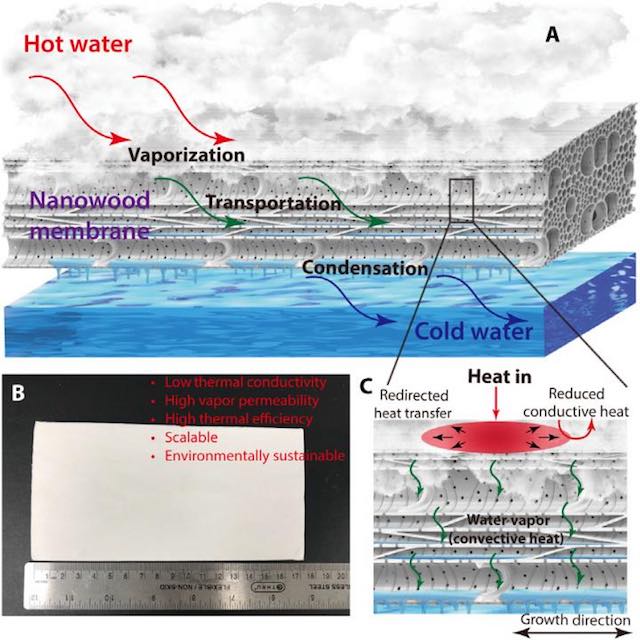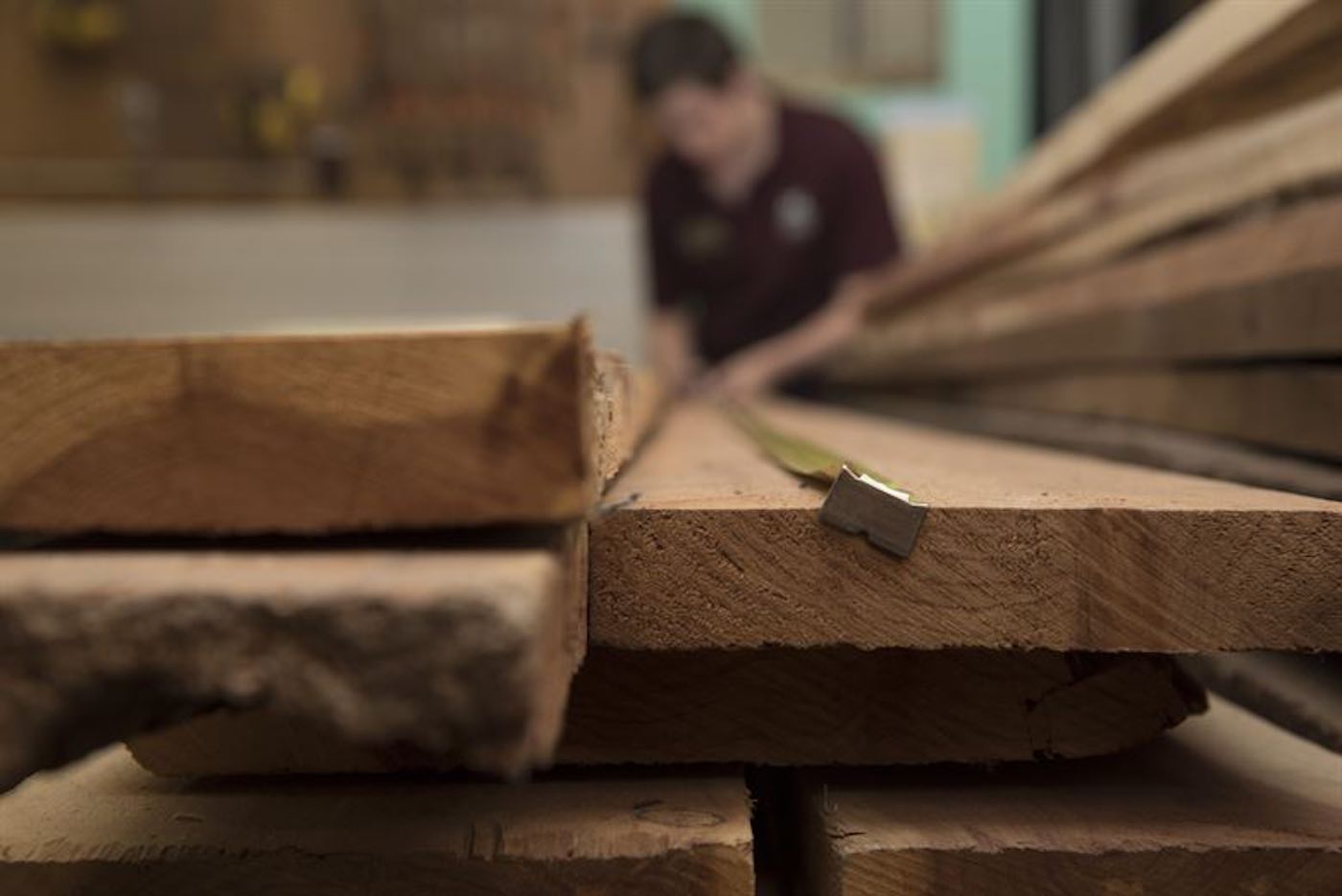
As a means of providing clean drinking water to countless arid regions around the world, scientists have developed a new technique for filtering salt water using a thin piece of wood.
Inspired by the intricate system of water circulating in a tree, a team of researchers from Princeton University figured out how to use a thin slice of wood as a membrane through which water vapor can evaporate.
Rather than using massive amounts of energy to boil water for long periods of time, the filtration method works by gently heating one side of the wood—measuring in at 500 micrometers thick—so that the water is driven evaporate to the colder side of the wood, leaving behind salt or other contaminants.
Most membranes that are used to distill fresh water from salt water are made of polymers, which are derived from fossil fuels and are also difficult to recycle. The wood membrane is a more sustainable material, and according to the researchers, has very high porosity, which promotes water vapor transport and prevents heat loss.
RELATED: Cheap 2D Material Can Cleanse 99.9999% of Bacteria From Water in 30 Minutes Simply by Using the Sun
In a paper published earlier this week in the journal Science Advances, the researchers demonstrate that the new membrane they designed—measuring in at 500 micrometers thick—performs 20% better than commercial membranes in water distillation tests.
Collectively, the wood membrane method filtered 20 liters of water per square meter, but the team believes that they will be able to improve the system with additional experimentation.
“If you think of traditional water filtration, you need very high-pressure pumping to squeeze the water through, so it uses a lot of energy,” Princeton researcher Jason Ren told New Scientist. “This is more energy efficient and it doesn’t use fossil-fuel based materials like many other membranes for water filtration.”
Clean Up Negativity By Sharing The Good News To Social Media – File photo by U.S. Airman 1st Class Sadie Colbert




















